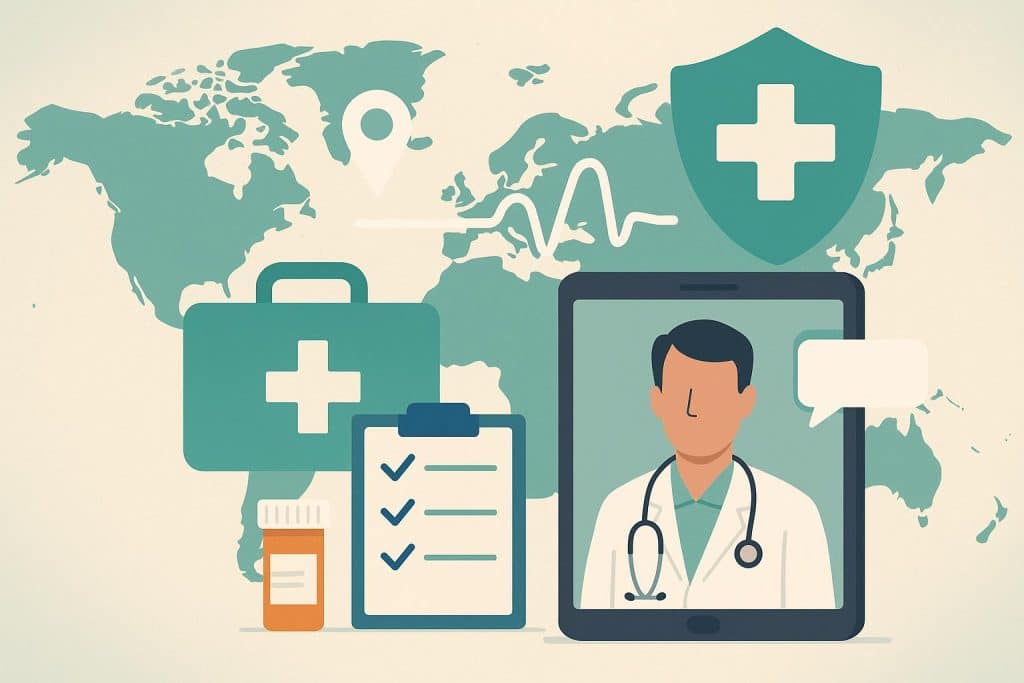New York City-based healthcare entrepreneur Stanley Vashovsky has spent more than three decades innovating within the medical technology and services industry. As co-founder and former CEO of DocGo, a leading mobile healthcare company, Vashovsky helped expand access to high-quality, technology-enabled care across 26 U.S. states and the United Kingdom. His leadership experience also includes serving as CEO and chairman of Health Systems Solutions and as Vice President of Innovations at Philips Healthcare. Beginning his career by founding MEDCARE, a healthcare services and software company, Vashovsky has consistently applied technology to improve care delivery and efficiency. Through his long-standing focus on healthcare innovation, he has contributed to advancements that align with the growing importance of telehealth and patient-centered care—key themes explored in this article on tips for seeking primary care, telehealth, and emergency services.
Tips for Seeking Primary Care, Telehealth, and Emergency Services
The advent of telehealth services and artificial intelligence-powered health technology has provided Americans with a depth of options for learning about, monitoring, and receiving treatment for many health conditions. In 2024, more than half of Americans reported that they had used telehealth services at least once. This is in part driven by the upsurge in use during the COVID-19 pandemic, when The Centers for Disease Control and Prevention noted a marked increase – with telemedicine usage leaping from 15.4 percent in 2019 to 86.5 percent in 2021.
As telehealth options continue to grow, Americans must understand when to use digital resources to assess their health, when to contact a healthcare provider, and when to seek immediate attention. The average person has often wondered how and when to seek medical treatment. Some of the most common questions doctors receive range from “Do I need to call my doctor?”, “Should I visit urgent care?”, and, more recently, “Do I need to go to the emergency room (ER), or can I use telehealth services?”
In some cases, the answer is obvious. Deep wounds, injuries that involve severe head trauma, and chronic illnesses all demand medical intervention. Although “better safe than sorry” may sound prudent, seeking emergency medical care for a condition doctors can assess via a telehealth platform can have consequences. Uninsured Americans on average spend from $2,400 to $2,600 on ER services, according to GoodRx. Most patients spend about two hours waiting for emergency health services, but ER wait times can span up to nearly five hours.
While patients should strive to avoid costly, time-consuming medical care whenever they can, the greater issue involves the nation’s worsening physician shortage. The Association of American Medical Colleges projects the shortage to surpass 40,000 primary care doctors by 2036. Spending time in an ER for a condition that requires little to no treatment can divert critical, potentially life-saving medical care from patients in desperate need. With these issues in mind, patients can take a few steps to assess their health issues and determine whether they should call a doctor and make an appointment, use telehealth services for a more immediate assessment, or seek immediate care.
As a general rule of thumb, sudden and severe symptoms almost always demand immediate medical are. These symptoms may include unexplained and severe chest pain, sudden abdominal pain, or weakness on one side of the body. Individuals should also treat sudden changes to vision or speech as medical emergencies. Patients must also learn to differentiate between emergency care and urgent care. Urgent care centers provide similar services to emergency rooms, but with a focus on minor, non-life-threatening illnesses and injuries that still carry time-sensitive needs. Urgent care providers can assist patients with allergic reactions, minor burns, wounds that require stitches, and conditions of similar severity.
If a person feels ill but stable, they should consider using telehealth services. For example, a person concerned about their flu-like symptoms but who does not feel critically ill can discuss concerns with a virtual healthcare provider. Telehealth platforms not only save patients time and money, but also prevent them from spreading their illness to other patients in an ER or emergency care center. Finally, Americans should not forget to take advantage of a knowledgeable primary care physician. While it is not uncommon to go up to 12 months without seeing a primary care physician, these professionals are familiar with their patients’ medical histories and possess considerable insight into whether an individual’s symptoms represent a minor, major, or severe health problem.
As healthcare options continue to expand, patients must learn how to navigate between primary care, telehealth, urgent care, and emergency services. While life-threatening conditions demand immediate ER visits, many non-emergency issues can be addressed through urgent care or telehealth, saving patients both time and money while reducing strain on overcrowded healthcare systems. Telehealth, in particular, offers convenience and accessibility for stable conditions, while primary care physicians remain a vital resource for long-term health management and accurate diagnosis. By understanding when and how to use these different services, Americans can make informed decisions that improve outcomes and preserve critical medical resources.
About Stanley Vashovsky
Stanley Vashovsky is a New York City-based healthcare innovator and the co-founder of DocGo, a mobile health company focused on delivering accessible, technology-driven care. With more than 30 years of experience in healthcare, he has served as CEO and chairman of Health Systems Solutions and as Vice President of Innovations at Philips Healthcare. Beginning his entrepreneurial journey with MEDCARE, Vashovsky has played a key role in advancing health technology and improving care delivery across multiple organizations in the United States and abroad.
Angela Spearman is a journalist at EzineMark who enjoys writing about the latest trending technology and business news.

